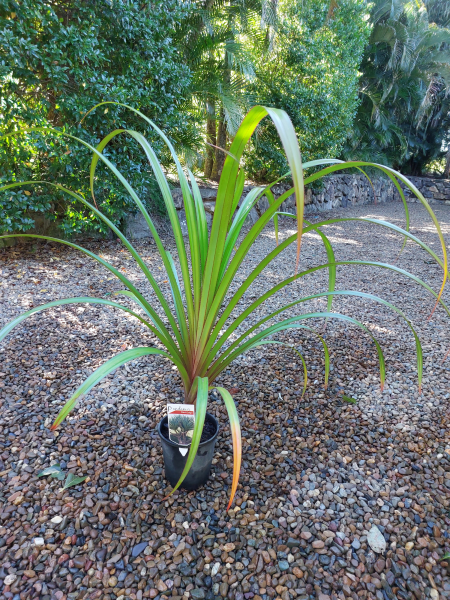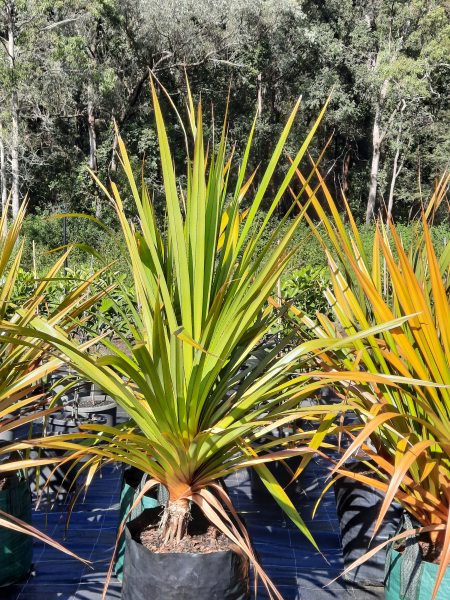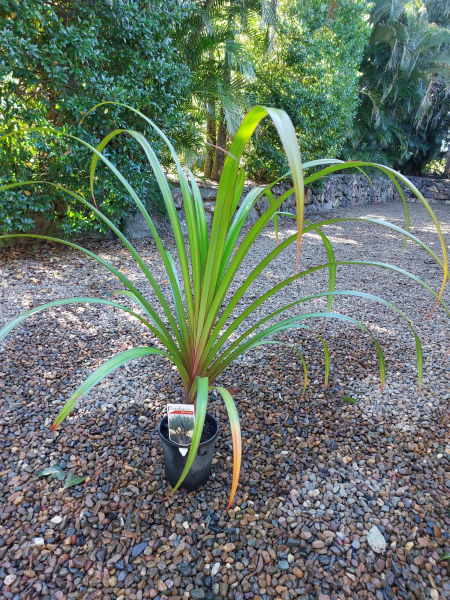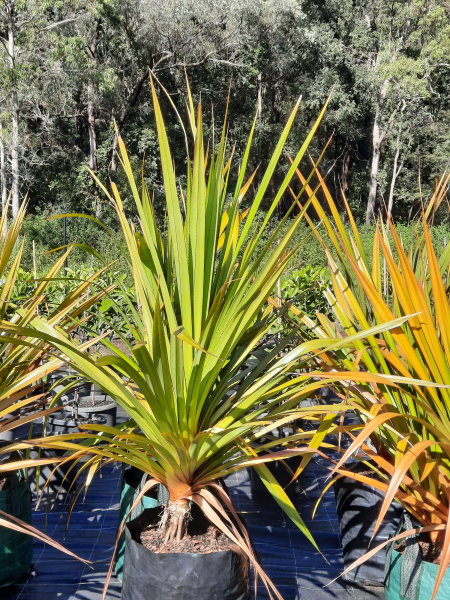Delivertree
Pandanus utilis 'Red Edge'
Pandanus utilis 'Red Edge'
Couldn't load pickup availability
Pandanus utilis 'Red Edge' is a striking, palm-like tree known for its dramatic red-edged, spirally arranged leaves and distinctive aerial prop roots. Native to tropical regions, it thrives in coastal environments, where its roots help stabilise sandy soils and prevent erosion. Though the fruit is starchy and must be cooked before eating, it has traditional uses and adds to the plant's functional and ornamental value.
Quick Overview:
- Height and Width: Reaches up to 4 meters tall and 2 meters wide
- Foliage: Spirally arranged, linear spiny leaves with distinctive red edges
- Trunk: Upright and smooth, supported by large, visible aerial prop roots
- Fruit: Starchy and edible once cooked; traditionally flame-roasted
- Growth Habit: Upright form with many horizontal spreading branches
- Position: Prefers full sun to part shade; needs at least 6 hours of direct sunlight
- Climate: Strictly tropical; salt-tolerant; not frost-hardy
- Soil: Adaptable to various types; prefers well-drained soils
- Etymology: Pandanus is derived from the Indonesian word "Pandan," and utilis means "useful" in Latin, referring to its multiple functional applications
Detailed Description:
Pandanus utilis 'Red Edge', commonly referred to as Screw Pine due to its spirally arranged leaves, is a visually unique and highly practical tropical tree. With its palm-like form, it features long, narrow leaves with spiny margins and bold red edging that spiral around the trunk. These vibrant leaf margins give the tree its cultivar name and enhance its ornamental value in tropical and coastal landscapes.
The trunk of the plant remains upright and smooth, giving rise to a network of prominent aerial prop roots. These roots are more than just a striking visual feature—they provide structural stability, particularly on sandy or unstable ground, and make the tree ideal for erosion control along shorelines and steep slopes.
The fruit of Pandanus utilis 'Red Edge' is fibrous and starchy. Though not flavourful when raw, it becomes edible after cooking, particularly roasting. Traditionally, segments of the fruit are flame-roasted until the outer shell becomes brittle, allowing access to the seed and surrounding pulp. The fibrous base of the fruit can release a tropical-scented juice when softened, although raw consumption is discouraged due to its tough, fibrous nature.
Despite the common name "Screw Pine," this species is a monocot, more closely related to grasses and palms than to actual pines or conifers. It is best suited to strictly tropical climates and does not tolerate frost. In tropical gardens, it thrives in full sun to partial shade and prefers a minimum of six hours of direct sunlight daily.
Growth and Maintenance
- Watering: Moderate; ensure consistent moisture during establishment
- Pruning: Minimal pruning required; remove old or damaged leaves as needed
- Fertilizing: Apply slow-release fertiliser during spring and summer to support growth
- Spacing: Allow space for aerial roots and spreading branches
Common Uses
- Feature tree: Bold, architectural form makes it ideal as a focal point
- Coastal stabilisation: Aerial roots are effective at anchoring dunes and preventing soil erosion
- Tropical landscaping: Enhances tropical aesthetics in public gardens, resorts, or private landscapes
- Traditional use: Fruit segments are edible after roasting and used in some traditional diets
Planting Benefits
- Aesthetic Appeal: Red-edged foliage and bold prop roots add a dramatic, tropical flair
- Erosion Control: Prop roots help stabilise sandy slopes and coastal landforms
- Tough and Tolerant: Handles salty winds and poor soils, ideal for seaside planting
- Functional Fruit: Edible after cooking; traditionally flame-roasted and valued in some cultures
Pandanus utilis 'Red Edge' offers a combination of striking beauty and coastal functionality. Whether planted for its ornamental form or its soil-binding aerial roots, it is a bold and practical addition to tropical gardens and seaside landscapes.
Share




